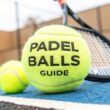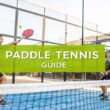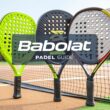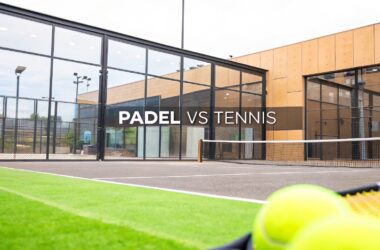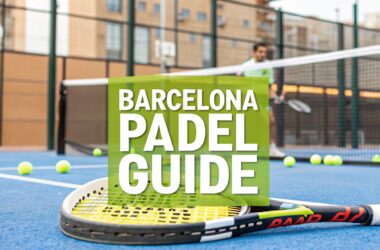If you boil it down, the main difference between pickleball and padel is pretty simple: pickleball is a game of finesse and net play, while padel is all about power and using the walls.
While both sports are incredibly social and easy for beginners to pick up, the courts, equipment, and core strategies create two totally distinct experiences.
Understanding the Padel and Pickleball Phenomenon

Padel and pickleball are two of the fastest-growing sports on the planet, pulling in millions of new players who love the fun gameplay and community feel. They look similar at a glance—both use paddles on courts smaller than tennis—but they offer fundamentally different athletic challenges. Knowing what sets them apart is the key to figuring out which one is the right fit for you.
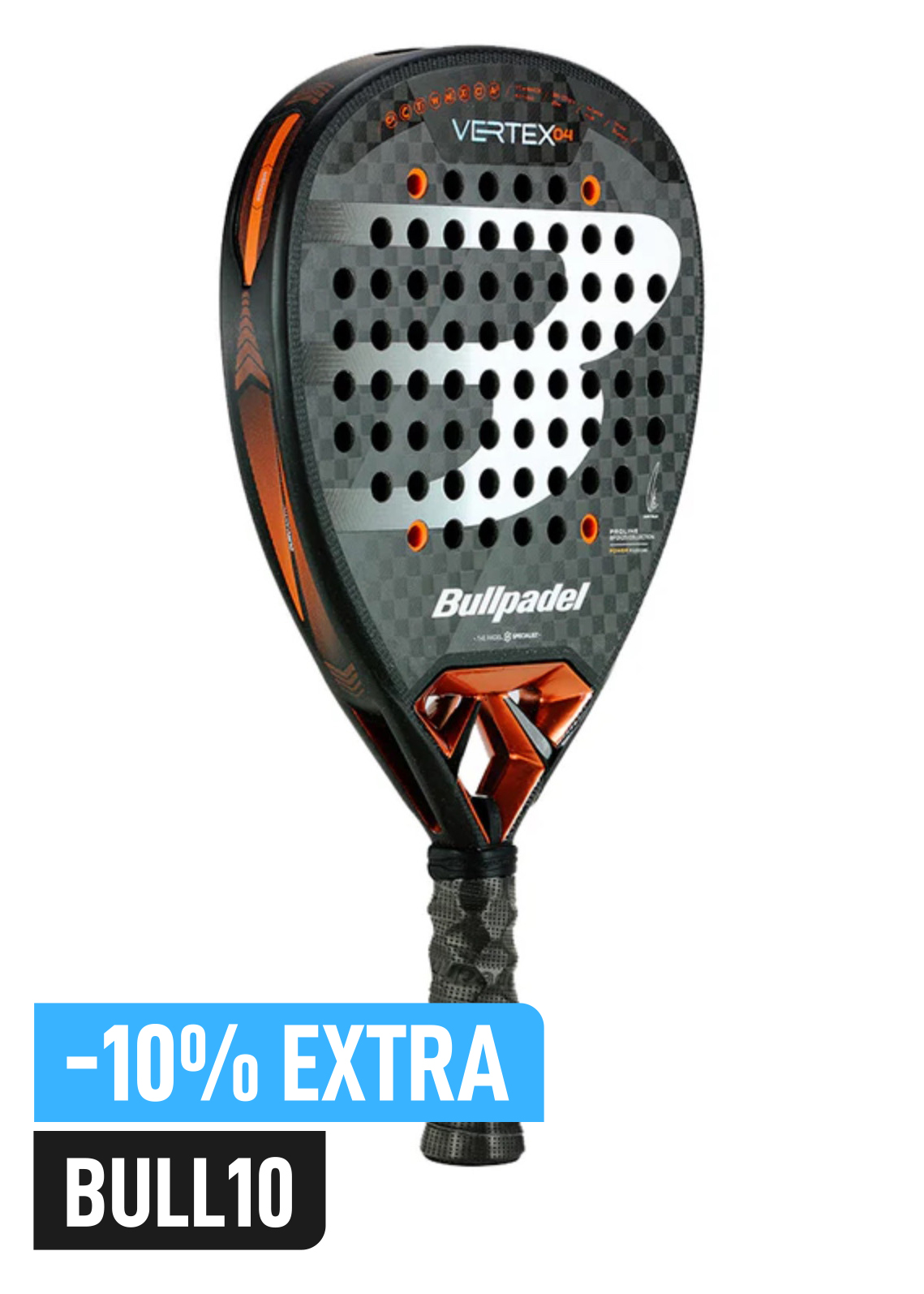
Buy the best padel gear to level up your next game!
CHECK OUT this deal from Padel Market!Get ready to take your game to the next level with the latest padel gear from Padel Market! Fast EU and Worldwide Shipping
This guide will give you a detailed breakdown of the padel vs. pickleball comparison. We'll get into everything from court dimensions and gear specs to the nitty-gritty of rules, scoring, and winning strategies, giving you a clear roadmap to understanding what makes each sport unique.
Pickleball's growth has been off the charts, especially in North America. It’s blown up to become the fastest-growing sport in the United States, mostly because it's so accessible for people of all ages. As of 2025, there are over 16,210 dedicated pickleball facilities in the U.S., with a wild 70,641 courts nationwide. The Sports and Fitness Industry Association (SFIA) counted 8.9 million players in 2022—that’s a 158.6% jump from 2020. You can read more about the popularity surge of these racket sports.
Core Differences at a Glance
To get a quick handle on things, this table lays out the essential distinctions that define each sport. We'll dive deeper into the specifics in a bit.
| Feature | Pickleball | Padel |
|---|---|---|
| Court Type | An open court with a low net, basically a mini tennis court. | An enclosed court with glass and mesh walls that are part of the game. |
| Ball Type | A hard, perforated plastic ball (think Wiffle ball). | A depressurized rubber ball, like a low-bounce tennis ball. |
| Paddles | A solid-faced paddle, usually made of composite, graphite, or carbon fiber. | A perforated, stringless racket built with a foam core. |
| Serve Style | Underhand serve, hit below the waist without bouncing the ball first. | Underhand serve, but you have to bounce the ball once before hitting it. |
| Scoring | Points are only scored by the team that's serving. Games are played to 11. | Uses the traditional tennis scoring system (15, 30, 40, game). |
This gives you a solid foundation. Now, let's get into a more nuanced look at how these differences really shape the gameplay, technique, and the overall experience for players.
Comparing The Court And Equipment

This is where you can truly see the DNA of each sport. The court you play on and the paddle in your hand aren't just details; they fundamentally shape how a point unfolds, what shots are possible, and the entire feel of the game. Get to know the gear and the ground, and you'll understand the soul of each sport.
A pickleball court is simple and open, a 44-foot by 20-foot rectangle that’s identical in size to a badminton court. Its most defining feature is the seven-foot non-volley zone on either side of the net, better known as the "kitchen." This area is crucial because it stops players from rushing the net and smashing everything, forcing a game of patience and clever placement instead of just brute force.
Padel, however, is played inside a cage. While the playing area is slightly smaller at 20 meters by 10 meters, the court is fully enclosed by glass and mesh walls. These walls aren't just boundaries; they are an active part of the game. This single element completely changes the dynamic, introducing strategic bank shots and extending rallies in ways you just can't do in pickleball.
The Tools Of The Trade
The contrasts continue right down to the equipment. Each sport's paddle and ball are built for a specific purpose, and while they might look similar at first glance, they couldn't be more different in how they perform.
A pickleball paddle is a solid-faced tool, often crafted from composite materials, graphite, or high-tech carbon fiber. That solid surface is perfect for the soft game, giving you fantastic control for dinks and drop shots near the kitchen. The material matters, too—graphite paddles offer a lighter touch for precision players, while composite and carbon fiber pack a bit more punch.
On the other hand, the padel racket, or "pala," is thicker and has no strings. Instead, its surface is perforated with holes, and it has a foam core that creates a springy, trampoline-like effect. This design is all about generating speed and spin, which perfectly suits the fast-paced, wall-bouncing action of the game. For a deeper dive, check out our detailed guide to padel tennis equipment.
Padel is a game of rebounds and angles, where the court itself becomes your strategic partner. Pickleball is a game of surgical precision at the net, where the open court demands control and placement over raw power.
The balls drive the two experiences even further apart. The pickleball is a hard, lightweight plastic ball peppered with holes, much like a wiffle ball. It flies slower and more predictably, which encourages those long, strategic rallies focused on placement. Conversely, the padel ball is essentially a depressurized tennis ball. It has a lower, more consistent bounce than a regular tennis ball, which is ideal for high-speed exchanges and playing shots off the glass.
For a clearer picture, let's break down the key differences side-by-side.
Pickleball vs Padel At a Glance
| Feature | Pickleball | Padel |
|---|---|---|
| Court Size | 44 ft x 20 ft | 20 m x 10 m (65.6 ft x 32.8 ft) |
| Court Enclosure | Open court, no walls | Enclosed with glass and mesh walls |
| Net Height | 34 inches at the center | 34.6 inches at the center |
| Paddle/Racket | Solid face, thin profile | Perforated face, thick foam core |
| Ball | Hard plastic ball with holes | Depressurized tennis ball |
| Key Gameplay Element | The "Kitchen" (non-volley zone) | Rebounds off the walls |
As you can see, the physical elements of each sport are tailored to create a completely different kind of game.
This distinction in equipment is a huge factor in why both sports have seen such explosive growth. The pickleball paddle market, for instance, has skyrocketed. Valued at USD 129.78 million in 2021, projections showed it reaching USD 67.14 billion by 2024, with Europe alone claiming over 30% of that revenue. This boom shows just how accessible and popular the pickle ball padel phenomenon has become across the globe. You can read more about the pickleball paddle market's incredible growth and see the numbers for yourself.

Buy the best padel gear to level up your next game!
CHECK OUT this deal from Padel Market!Get ready to take your game to the next level with the latest padel gear from Padel Market! Fast EU and Worldwide Shipping
Understanding Gameplay and Scoring Rules
The soul of any sport lives in its rules, and this is where the differences between pickleball and padel really start to shine. While they both look similar at a glance—hitting a ball over a net—the specific regulations for serving, scoring, and court interaction create two completely different strategic sandboxes. Getting a handle on these rules is the first step to understanding what makes each game so addictive.
The game kicks off with the serve, and you can spot the first major contrast right away. In pickleball, the serve is a simple underhand motion. The paddle has to make contact with the ball below your waist, and you must keep both feet behind the baseline. Critically, you can't bounce the ball before hitting it. It’s a straightforward serve designed to get the point started, not to blow your opponent off the court.
Padel adds a small but significant twist to this. The serve is also underhand and has to be hit at or below waist level. But here’s the key difference: the server must bounce the ball once inside their service box before striking it. This bounce-then-hit sequence introduces a rhythm and timing element that just isn't there in pickleball, changing the dynamic from the very first shot.
Scoring Systems And Rally Dynamics
Once the ball is flying, the scoring methods couldn't be more different. Pickleball keeps things simple. Points can only be scored by the team that is serving. Games are usually played to 11 points, and you have to win by a margin of two. This setup puts all the pressure on holding your serve and forces the receiving team to play smart just to get the serve back.
Padel, on the other hand, borrows its entire scoring system directly from tennis. You'll hear the familiar calls of 15, 30, 40, game, along with "deuce" and "advantage." This tennis-style system means either team can win a point on any rally, no matter who served, making every single exchange feel critical.
The biggest rule difference isn't the serve or the score—it's how the court itself comes into play. Pickleball’s non-volley zone forces a game of patience and precision, while padel’s glass walls invite creative angles and relentless attacks.
This is where the two sports truly diverge. Pickleball is defined by its non-volley zone, affectionately known as "the kitchen," a seven-foot area on each side of the net. Players are not allowed to hit volleys while their feet are inside this zone. This clever rule prevents players from just standing at the net and smashing everything, creating the strategic art of the "dink"—a soft, controlled shot that baits opponents into a patient rally until someone makes a mistake.
The Game-Changing Rules
Padel has no kitchen, but it has something far more dramatic: enclosed glass and mesh walls. In padel, the ball is still live after it bounces off any of the walls. This completely transforms both offense and defense. A shot that would be a clear winner in pickleball might just be the start of a wild rally in padel, as players use the walls to return shots that seemed impossible to reach.
Let's break down these core differences:
| Rule Aspect | Pickleball | Padel |
|---|---|---|
| Serving Motion | Strict underhand swing, ball cannot be bounced first. | Underhand swing, but the ball must be bounced once before contact. |
| Scoring Method | Points scored only on serve; games played to 11. | Tennis-style scoring (15, 30, 40); points can be won by either team. |
| Key Zone | The "Kitchen" (non-volley zone) prohibits volleys near the net. | No specific restrictive zones, but the entire court is in play. |
| Court Interaction | Open court; if the ball goes out of bounds, the point is over. | Enclosed court; the ball can be played off the glass walls after bouncing. |
These rules fundamentally shape the feel of each game. The kitchen in pickleball slows things down and rewards control and finesse. In contrast, padel's walls speed the game up, demanding quick reflexes, power, and a sharp sense of spatial awareness. If you want to dive deeper, you can explore detailed guides on the official rules of padel to see how every regulation influences the on-court action.
Key Techniques and Winning Strategies
Sure, you can know the rules, but mastering the techniques that actually win points? That's what separates the weekend warriors from the seasoned players. Both sports demand quick feet and court sense, but the path to victory in pickleball versus padel is paved with totally different skill sets. This is where the real heart of the pickleball vs. padel debate lives.
In pickleball, the game is won and lost at the net. It all boils down to a foundation of patience and precision, with three core techniques really defining high-level play. First up is the patient art of dinking—those soft, controlled shots that arc just over the net and land in your opponent's non-volley zone. This isn't about brute force; it's about forcing a mistake or baiting them into popping up a ball you can put away.
That whole dinking game is what sets up the all-important third shot drop. Picture this: after the serve and return, the serving team’s third shot is often a soft, perfectly weighted drop that lands gently in the kitchen. A good drop shot completely neutralizes the returning team's advantage, letting the servers close in on the net and start the dink rally on their own terms.
Pickleball: The Art of Control
These skills—dinking and the third shot drop—are really defensive chess moves designed to dictate the game's tempo. They create this strategic stalemate at the net, where both teams are just probing, waiting for that one perfect opportunity to attack. It's this patience-driven game that makes pickleball so fascinating to watch and play.
- Dinking: The soft game played right at the net, focused on out-maneuvering your opponents.
- Third Shot Drop: The crucial shot that gets you from the baseline to the net, turning defense into offense.
- Net Play: Ultimately, your goal is to own the kitchen line and wait for a high ball to smash.
Padel: The Power of the Walls
Padel, on the other hand, is a whole different beast. It's an aggressive, three-dimensional game of raw power and crafty angles. Because the court is enclosed, a huge part of your defensive game is actually using the glass walls. A key skill is learning how to read a ball coming off the back or side walls, turning what should be a defensive scramble into a powerful offensive return.
The shots that truly define padel are the big overheads meant to pin your opponents to the back of the court. The bandeja (Spanish for "tray") is a sort of defensive smash you hit with a slice, designed to go deep and bounce low. It's not usually a point-winner, but it’s a strategic weapon to keep your team at the net. Then you have the vibora ("viper"), its more aggressive cousin—a faster, side-spinning smash aimed at forcing a weak return or just winning the point outright.
Padel’s winning strategy is built on relentless pressure, using powerful overheads and wall play to dictate the rally. Pickleball rewards patience, using soft shots and clever placement to control the net and wait for the perfect moment to strike.
And you can't talk padel without mentioning the tactical lob. It’s fundamental. You use it to push your opponents off the net, buying your team time to get back into prime attacking position or just to reset a point that's getting chaotic. If you want to excel in the fast-paced world of padel, you have to master these powerful shots and learn to make the walls your best friend.
Choosing the Right Sport for You
So, you’re trying to decide between pickleball and padel. The real question isn’t about which sport is better, but which one is the right fit for you. It really boils down to your athletic background, what you’re looking for socially, and ultimately, what you find fun.
Let's break it down into a few common scenarios to see where you might land.
Are you picturing a sport the whole family can jump into, from young kids to grandparents? Or maybe you just want something low-impact that's easy to pick up and super social. If that sounds like you, pickleball is an excellent choice. The court is smaller, the ball is slower, and the underhand serve has a gentle learning curve, making it incredibly welcoming for total beginners and players of all fitness levels.
The core decision is simple: Pickleball is often the ideal entry point for its social, accessible nature and strategic finesse. Padel appeals to those seeking higher intensity, complex power shots, and a game deeply influenced by tennis tactics.
This infographic does a great job of highlighting the core DNA of each sport—pickleball is all about control and net play, while padel is built on power and using the walls.

As you can see, pickleball is a game of strategy and precision. Padel, on the other hand, leans heavily into raw athleticism and dynamic rebounds off the glass.
Who Should Choose Padel
Now, if you come from a tennis background and find yourself craving a faster, more physically demanding game, padel will feel like coming home. The enclosed court and the ability to play shots off the walls add a layer of strategic depth that rewards power, lightning-quick reflexes, and solid teamwork. Since it's played almost exclusively in doubles, it’s a perfect match for competitive pairs who live for fast-paced rallies and aggressive, attacking shots.
If you’re still torn between pickle ball padel, think about what’s really driving you to pick up a paddle.
- For Social Fun and Accessibility: Go with pickleball. It's generally easier to find courts, the community is famously welcoming, and you can get a decent rally going within minutes of stepping on the court for the first time.
- For Athletic Challenge and Intensity: You'll want to choose padel. It involves more running and explosive movements, powerful overhead smashes, and the unique challenge of mastering shots off the walls.
- For Strategic Depth: This one is a toss-up, honestly. Pickleball’s "dinking" game is a slow-burn battle of wits and patience, while padel's use of the walls adds a three-dimensional, chess-like element to every point.
Ultimately, your choice depends on whether you prefer a game of tactical placement or one of dynamic power. For an even deeper dive, you can explore more insights on the pickleball vs padel debate to help you make the final call.
Common Questions About Padel and Pickleball
When you're weighing the differences between pickleball and padel, a few common questions always seem to pop up. Let's tackle them head-on to give you a real-world feel for what it's like to get started in either sport.
Which Sport Is Easier to Learn?
For anyone walking onto a court for the first time, pickleball is usually a bit easier to pick up. The underhand serve is incredibly intuitive, and the smaller court size means you're in the action right away. You can get a rally going within minutes, which is a huge part of the fun.
Padel is also known for being beginner-friendly, but it has a couple of extra layers to it. Getting the hang of using the glass walls to your advantage isn't something that comes instantly, and the serve—where you have to bounce the ball first—takes a little practice. That said, if you have any background in a racket sport like tennis or squash, you’ll feel right at home with a padel racket pretty quickly.
The bottom line is this: both are easy to get into, but pickleball offers that immediate "I can do this!" feeling. Padel's learning curve is just a little steeper at the very beginning because of the walls and unique serving motion.
Which Sport Is More Physically Demanding?
Generally speaking, padel will give you a more intense workout. The rallies tend to be faster and longer, demanding quick, explosive movements to cover the court. You're doing a lot more lateral sprints and powerful overhead smashes, and the larger court just means more ground to cover.
Pickleball can definitely be a great workout, but its design often leads to a lower-impact game. A lot of the action happens up at the non-volley line (or "kitchen"), focusing on quick reflexes and precise shot placement rather than all-out sprints. This makes it a fantastic choice for a wide range of ages and fitness levels.
Is It Hard to Find Courts for Both Sports?
This really comes down to where you live. In the United States, pickleball is everywhere. It's not hard to find public parks where tennis courts have been converted, and new, dedicated pickleball facilities are popping up all over the place.
Padel is a global phenomenon, but it's still building its foundation in North America. Finding a padel court can be a bit of a hunt, though new clubs are opening up in major cities. In Europe and Latin America, however, it's the complete opposite—padel courts are often more common than tennis courts.
Your best bet is to do a quick search for "pickleball courts near me" and "padel courts near me." That will tell you everything you need to know about what's available in your area.
Ready to dive deeper into the world of padel? At Padel Rumors, we've got everything you need, from expert guides and gear reviews to the latest news from the pro tours. Explore our resources and join the fastest-growing sport in the world. Learn more at https://padelrumors.pages.dev.


